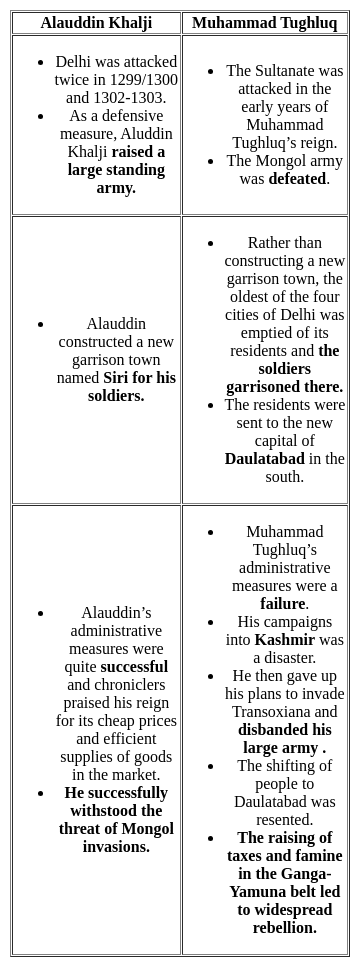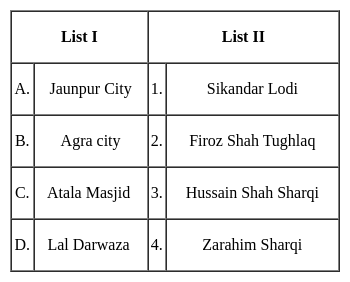APSET Paper 2 Mock Test - 7 (History) - AP TET MCQ
30 Questions MCQ Test APSET Mock Test Series 2025 - APSET Paper 2 Mock Test - 7 (History)
B.R. Ambedkar played a pivotal role in shaping the Indian Constitution. Among the following statements regarding his contributions and the features of the Constitution, which are CORRECT?
(a) Ambedkar championed a socialist economic system and advocated incorporating it directly into the Constitution.
(b) The Constitution incorporates a federal system with a strong central government to ensure national unity.
(c) Ambedkar, though the Chairman of the Drafting Committee, faced significant opposition to his ideas during the Constituent Assembly debates.
(d) The Constitution enshrines Fundamental Rights as justiciable rights, enforceable by the courts.
(b) The Constitution incorporates a federal system with a strong central government to ensure national unity.
(c) Ambedkar, though the Chairman of the Drafting Committee, faced significant opposition to his ideas during the Constituent Assembly debates.
(d) The Constitution enshrines Fundamental Rights as justiciable rights, enforceable by the courts.
Which one of the following towns of Rajasthan is also known as 'Champavatii' in ancient sources?
| 1 Crore+ students have signed up on EduRev. Have you? Download the App |
Postmodern critiques of historical representation often rely on the concept of:
Which one of the following is the unique festival of Bihar?
Consider the following statements.
1) The railway lines were laid primarily with a view to linking India’s market places in the interiors with the ports of export.
2) Several railway lines were built at low cost to serve British imperial interests.
Choose the correct statements.
Consider the following statements with reference to Akbar’s reign.
1. In the first phase of Akbar’s reign, the Mughal empire was challenged by Afghan forces under Hemu.
2. Bairam Khan as regent of Akbar shared his power and influence with nobles of the court.
Which of the above statements is/are correct?Which among the following sentence is incorrect about Rajadhiraja Chola I?
Which of the following is / are correct statements about Sarojini Naidu?
She was first woman to become President of Indian National Congress
She was first woman to become the governor of an Indian state
She was awarded by British “Kaiser-i-Hind medal” for her contribution towards welfare of World War -I victims
Select the correct option from the codes given below:
With reference to Indian Medieval History, consider the following statements:
1. The Mongols appeared on the northwestern frontier of India for the first time during reign of Iltutmish under the leadership of Chengez Khan.
2. The raising of taxes and famine in the Ganga-Yamuna belt during Alauddin Khilji led to widespread rebellion.
3. Alauddin Khilji sent his toughest generals: Ghazi Malik and Malik Kafur to protect the country from Mongol invasion.
How many of the statements given above are correct?
Some events of the Indian National Movement are given below:
P: August offer
Q: Wavell Plan
R: Cripps Mission
S: Poona Pact
Arrange them chronologically by the year of their occurrence.
Read statements A, B and C and select correct answer.
Why Magadha became the most important Mahajanpada in about two hundred years?
A. Many rivers such as Ganga and Son flowed through Magadha.
B. Parts of Magadha were forested.
C. There were iron ore mines in the region.
Consider the following statements about the Tebhaga Peasant Movement:
- The movement was an independence campaign initiated by the Gujarat Kisan Sabha
- The demand of the movement was to uproot of Zamindari system and the end of serfdom
Which of the above statements is/are correct?
- Narsa Nayak's son Veer Narasimha killed Immadi Narasimha Raya and took over the throne himself.
- Krishna Deva Raya was the greatest ruler not only of the Saluva dynasty but of the entire Vijayanagara empire.
- Vira Narasimha Raya was a contemporary Portuguese governor Almeida.
Consider the following subedar of Chhattisgarh and arrange them in chronological order of their rule:
(i) Mahipat Rao Dinkar
(ii) Vitthal Rao Dinkar
(iii) Keshav Govind
(iv) Bikaji Gopal
Choose the reason/reasons behind the commercialization of agriculture during British rule :
1. India was reduced to a supplier of raw materials.
2. Better means of transportation made trade-in agro products feasible.
3. Monetization of land revenue payment.
4. Industrial Revolution in England.
Choose the correct option :
Which of the following statements are correct regarding the Bhoodan movement?
I. The movement was independent of the government.
II. The movement had support from the Congress party.
III. It was led by Jayaprakash Narayan
Nalanda University was founded by which of the following ?
The Sanchi Stupa complex has survived due to :
(1) The decisions of Shahjahan Begum and Sultan Jehan Begum
(2) The good luck in escaping the eyes of railway contractors and builders
(3) The good luck in escaping the eyes of those looking for finds to carry away to the museums of Europe
(4) The steps taken by the British government to conserve the Stupa
(5) The steps taken to demarcate it as a residential building.
Choose the correct answer from the options given below :
Which of the following acts introduced the principle of constitutional autocracy?
Bhagwati sutra is related to which of the following religions?
Which of the following statement is/are correct?
- Jahandar Shah II encouraged Jazia System.
- Nadir Shah of Persia invaded with the help of Sadat Khan who defeated the Mughal army at the Battle of Buxar.
- Marathas under Baji Rao, for the first in Mughal history, raided in Delhi.
Select the correct code from below.
Arrange the following Buddhist sects in chronological order:
(i) Hinayanists and Mahayanists
(ii) Sthaviravadins and Mahasanghikas
(iii) Vajrayanists
(iv) Sarvastivadins
Select the answer from the codes given below:
King Charles II handed over the Bombay Island to the company in which year?
Consider the following statements:
1. The All India Kisan Sabha was founded by Gauri Shankar Mishra and Indra Narayan Dwivedi
2. The Congress Manifesto for the 1937 provincial elections was strongly influenced by the Awadh Kisan Sabha
3. All India Kisan Sabha is also known as ‘Akhil Bhartiya Kisan Sabha.’
Which of the above statements is/are correct?
Both Nyaya and Vaisheshika:
1. accept the liberation of the individual self as the end goal
2. believe that liberation is attained only through the right knowledge of reality
Which among the above is/are correct?
|
60 tests
|



















